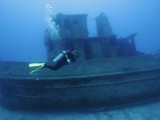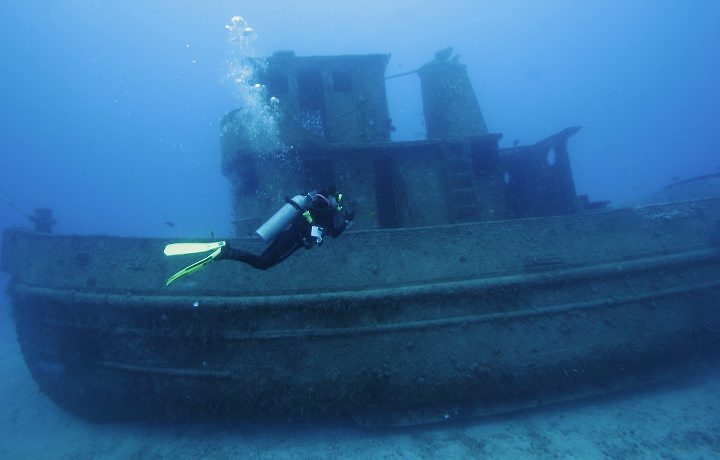Este post também está disponível em:
Português
English

Dive sites in Bahia Cabrália, Camaçari, Caravelas, Itacaré, Morro de São Paulo, Porto Seguro, Salvador and Abrolhos.
Salvador, capital of the State of Bahia. There your travelers will be entertained with beautiful beaches, museums, houses and baroque churches of the sixteenth, seventeenth and eighteenth century. Besides all these predicates, the city has one of the most modern hotel infrastructures in Brazil.
The city, which has unique characteristics, has also become one of the main international tourist destinations. Famous for its history, for the legacy left by people from other continents, for its cultural miscegenation, for its religious syncretism and for its hospitable people.
Until 1763, Salvador was the capital of the Portuguese Crown in the Americas, and was also the main port of the southern hemisphere until the 18th century. Nature was prodigal in creating its beauties along 50 kilometers of beaches and ecological parks.
As for diving, Salvador has several spots for all levels and tastes. With clear and always warm water, the local sea is very rich in marine life and shipwrecks.

Corais e navio naufragado convidam ao mergulho
Main Diving Spots in Bahia
1. Banco da Panela
Considered an archaeological site due to the large amount of shipwrecks from the battles of the seventeenth century, it is located at the entrance to the Port of Salvador, 200m from Fort São Marcelo. With depths ranging from 5 to 18m, having an excellent drift on site.
2. Beirada do Badejo
Excellent point for a small drift, due to the slope of the submarine relief, and with several marine species inhabiting the place, such as the square whiting and several types of corals. The depth is around 10 to 15m, being close to the Yacht Club.
3. Caramuanas
Caramuanas is considered one of the best diving spots, where we find large coral formations, with a depth ranging from 2 to 30m. It is located 40 min. by boat, departing from Itaparica Island.
4. Jequiriçá
Similar to Caramuanas, it has depths ranging from 1 to 30m. Located 3 hours by boat from the island of Itaparica.
5. Mar Azul
Almost 50km from Porto da Barra in a southeasterly direction, Mar Azul is actually a point in the open sea, where the depths are abyssal, around 1,000m. Many passing fish are found, and the water is always crystal clear, being a dive advisable only for experienced divers.
6. Quebramar Norte
It was built in order to protect the Port of Salvador. This artificial reef is an excellent diving spot. Throughout its length you can see coral reefs, sponges and a great marine diversity (budgies, ciliates, seahorses, clown shrimps).
During the night, you can find lobsters, squid, trumpet fish, coffer fish among others. Depth of 2m and visibility from 5 to 10m.
7. Quebramar South
Depth between 5 and 12m, being able to dive both from the outside where the bottom is sand, and from the inside, more sheltered and where the bottom is mud. It is observed in this dive, several coral formations, sponges, many fish (ciliary, black maria, safe fish, salema), and at night, many lobsters, squids and shrimp are present.
8. Corals of Ondina
The Ondina Corals are also known as “gardens”, being an area of approximately 200 square meters, with rocky bottom, corals and schools of fish. It has a visibility of 25 meters, and the depth of the dive can vary between 10 to 16 meters. Usually the dive starts in Ondina and ends near the Christ, in the neighborhood of Barra, this when there is current.
9. Rio Vermelho Tugboat
It is about 500 meters from the coast of the Rio Vermelho neighborhood. It is a shipwreck and a perfect spot for scuba diving in Salvador, as it presents a bit of history from the 1970s.
According to the testimonies, the tugboat was called Cobra and sank due to bad weather. It is now at a depth of between 12 to 14 meters, resting on a sandbank;
10. Walls
These are rock formations covered with corals parallel to the BTS (Bahia de Todos os Santos) Channel. Their depth varies from 20m to 60m. The 20m plateaus serve as a place of anchorage for several ships, since the Port of Salvador does not accommodate all ships.
The length of the walls is immense and new spots are found there all the time. On the walls, dives are made using reels for a safe return to the point of origin, or if the tide is flooding, it is possible to program a drift. On the edges of the walls life is abundant and the fish are large.
11. Ilha dos Frades
With depths varying between 5 and 15m, you dive around the island, where you can appreciate a very varied marine life.
Only 6 km long and located practically in the center of Todos os Santos Bay, Ilha dos Frades presents beautiful landscapes, despite being one of the smallest islands in the Bay. According to legend, the island received this name after the Tupinambás Indians murdered two friars, who went to the island to catechize them.
Considered an ecological reserve since 1982, it has the shape of a 15-pointed star and features beautiful beaches, coconut groves, mountains, lakes, waterfalls and a typical vegetation of the Atlantic Forest, with the existence of native trees, including the brazilwood.
Diving in Ilha dos Frades from Salvador is a tour for the whole family, usually using large schooner type boats, with 2 hours of navigation. During the crossing, you have a beautiful view of several other islands in the Bay of All Saints.
The diving spots are covered with coral reefs and lots of life. Depth is between 5 and 15m and visibility is between 10 and 15m. After the dives, it is possible to disembark at Ponta de Nossa Senhora Beach.
Ponta de Nossa Senhora Beach is located in the north of the island, between Outeiro dos Carneiros and Morro de Nossa Senhora de Guadalupe. It is one of the most popular beaches of Ilha dos Frades, for its calm, warm and crystal clear waters, excellent for swimming, fishing, diving and other water sports.
It also has beach huts, which guarantee the comfort of tourists, serving seafood and fish, in addition to providing showers for freshwater bathing.
12. Archipelago of Abrolhos
75 km from the coast and formed by a massive set of corals, Santa Bárbara, Siriba, Redonda, Guarita and Sueste, are 3 to 6 hours away by boat.
They are 490Km² of volcanic origin, form the Mid-Atlantic Dorsal, being a chain of submerged mountains that divide the Atlantic Ocean in half and that stretches from Antarctica to the Arctic, with an extension of more than 15,000km, with a base at 4 thousand meters deep.
Abrolhos has an extensive environmental fauna, which has been protected since the creation of the Abrolhos National Marine Park on April 6, 1983, by Federal Decree No. 88.218 and considered by the UN as one of the 12 most important parks in the world.
A great variety of fishes, hulls, sea creatures, shipwrecks such as the Rosalinda, Guadiana and Santa Catharina, as well as the brain corals Mussimilia brasiliensis are found, totaling 19 types of corals and 95 types of fishes, and a climate that is always warm (from 20 to 28 ºC).
The parcels, northwest of Santa Barbara, are coral formations that reach the surface. Between the Sueste and Redonda islands, it is possible to bump into barracudas and large fish passing through.
The dives are very comfortable and great attractions, such as the Humpback whales, which arrive for mating and nursing their young in the months of July to November, coming from Antarctica, looking for warmer waters.
At some points, care must be taken with the suspension of the bottom, as it is composed of very fine sand and it is common for beginner divers to raise excessive suspension. The dives are carried out at a depth varying between 3 and 40m, and with visibility between 10 and 30m.
The only inconvenience is the fact that visitors are 24 hours depending on the boat to bathe, sunbathe and so on, because the islands have no infrastructure besides not being allowed to disembark on the main island without authorization from the Navy.
As an operator, Apecatu Expeditions is the best indication of liveaboard in Abrolhos.
13. Arraial D’Ajuda
With only 10 or 15 minutes of sailing in a boat, you can reach several diving spots. The region is endowed with several coral banks, ornamental and passing fish, places with shallow depths, being excellent for Open Water divers (Basic).
In addition, for those who like shipwrecks, there is a freighter that sank in 1980 and is called Castor, being at 16m deep, 80m long, and an abundant marine life, with several types of corals, located in front of Coroa Vernelha Beach, very close to the coast.
The most visited points are the Chapeirões de Corais to the south of Pitinga Beach, in Arraial d’Ajuda, where we find a lot of marine life and a colorful variety of corals, all being close to the coast, where we can reach in little more than 10 to 20min of navigation diving at depths ranging from 10 to 18 meters.
14. Cabrália or Santa Cruz Cabrália
It is considered by many, as the place of the discovery of Brazil, instead of Porto Seguro. There are rumors that this area was the place where the Portuguese arrived in 1500.
The diving itself is very rewarding, with large corals and many passing fish such as bull’s eye.
For wreck lovers, you can dive the Castor with some care due to the water being a bit dark.
Bahia.ws is the largest travel and tourism guide for Bahia and Salvador.



















